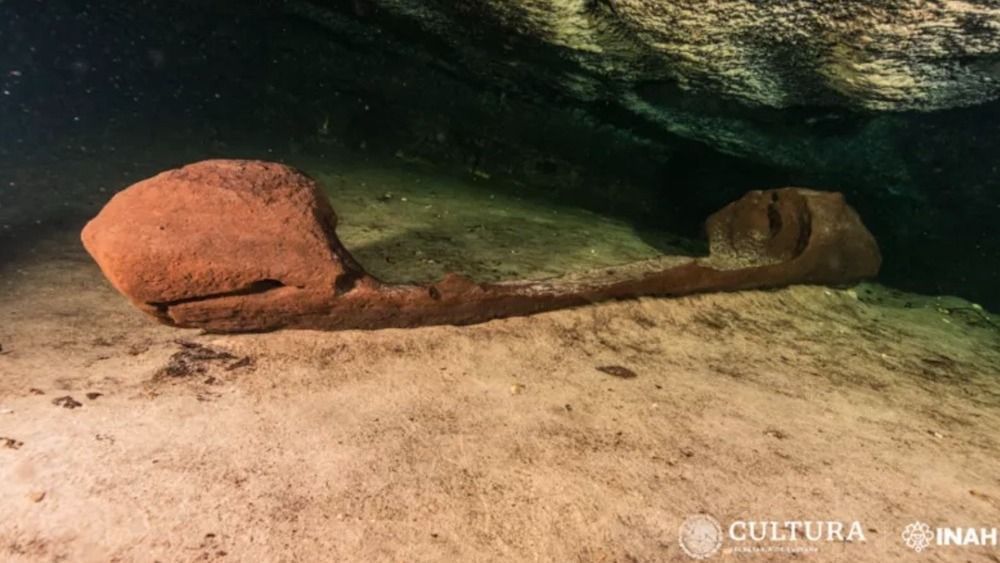Maya canoe surrounded by animal and human bones found in 'portal to the underworld' in Mexico
Carbon analysis of the canoe determined that it was built during the 16th century.
A wooden canoe surrounded by human and animal skeletons near the ancient Maya city of Chichén Itzá may have been used as part of a ritual.
In 2021, divers in Mexico's Yucatán Peninsula discovered the boat and bones deep inside an underwater cave located 15 feet (4.6 meters) below the water's surface. In total, archaeologists found 38 skeletal remains, including a human metatarsal (foot bone) most likely from a woman, as well as bones from an armadillo, dog, turkey and eagle, according to a statement translated from Spanish.
The abundance of armadillo bones and the presence of the human foot have led researchers to conclude that the canoe may have been used by the Maya during a ritual and was intentionally placed inside the cave. This idea is based on the fact that armadillos are adept swimmers capable of holding their breath underwater, using their claws to propel themselves forward. The researchers think that the armadillo remains could be an "allusion to the entry of the [armored animal] into the underworld," according to the statement.
The Maya believed that caves and cenotes (sinkholes) were portals into the underworld and used armadillos as an "avatar" for God L, a jaguar deity with a cape resembling the armored pattern of an armadillo's shell.
Related: Lost Maya city discovered deep in the jungles of Mexico
"There are known images in Mayan ceramics in which [the armadillo] appears as a 'stool of the gods,' with characters that place their feet on it," Alexandra Biar , an archaeologist from the French National Center for Scientific Research (CNRS), said in the statement. "This would be directly linked to the archaeological evidence observed in the cenote," with the armadillo serving as a manifestation of the deity.
The canoe itself also provides archaeologists with further evidence that it was used as part of a sacred ceremony, as it contained a "very heavy" prow and stern that would have been difficult to navigate in swift currents and was most likely never seaworthy.
When the boat was first discovered during an excavation ahead of a railroad project, archaeologists "tentatively dated" it to between A.D. 830 and 950, according to Reuters .
However, new carbon analysis shows that the wood of the vessel dates to the 16th century, according to the statement.
Source: Livescience.com


